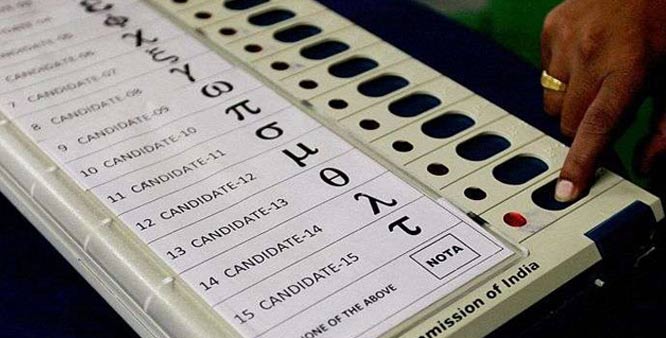Growing Disillusionment With Political Class: Over 1 Cr Voted NOTA In 2013-17

Is the Indian voter getting disenchanted with the prevailing political system in the country? Several studies based on the increased usage of the None Of The Above (NOTA) option right at the bottom of the EVM machine does suggest so.
Studies and data provided by the Election Commission indicate an increasing trend of voters pressing the NOTA button to express their resentment against all the contesting candidates or the political process in general.
Figures provided by the Association for Democratic Reforms (2013-2017) shows that the negative option has secured 1.33 crore votes in state Assemblies and Lok Sabha elections combined. In the 2014 general elections, 1.08 per cent of the voters (or 60,02,942 votes) went with this option.
It may have surprised many, but in Odisha, Koraput district saw the highest number of voters opting for NOTA, which was 3.35 per cent of the votes polled.

One analysis published in 2017 points out that there were 261 Assembly constituencies since 2013 in which the negative votes were higher than the winning margin. In the case of Lok Sabha elections, there were 24 constituencies where NOTA achieved the same feat. Note that if the NOTA option was absent in all of these instances, it could have theoretically swung the results of the elections.
More recently, NOTA votes were more than the victory margin in at least 12 seats in the Rajasthan Assembly elections. In Madhya Pradesh, NOTA votes exceeded the margin of victory in 22 seats. The significance of these figures can be realised if one is to see how close the elections in the two states were.
In the Tamil Nadu RK Nagar bypoll of 2017, it was not TTV Dhinakaran’s victory that grabbed headlines, but the Bharatiya Janata Party’s (BJP’s) abysmal performance. The BJP candidate K Nagarajan came sixth with 1,417 votes, much lesser than the number of votes NOTA got – 2,373.
In the recent elections held in the five states of Chhatisgarh, Madhya Pradesh, Rajasthan, Telengana and Mizoram, roughly 15 lakh voters chose the NOTA option.
Garima Goel, a scholar at the King’s India Institute, King’s College London, who has researched extensively on NOTA voters, was quoted earlier saying, “NOTA voting decreases as constituencies get more urbanised.” In other words, rural voters are more likely to vote NOTA than urban voters. Similarly, seats with a lower literacy rate are more likely to have higher NOTA votes.
Interestingly, it may not be the tribals but the non-tribal population who are driving NOTA voting as a form of protest against the lack of representation for their community.
Increased use of the NOTA button since the last couple of years suggests to a growing chasm between the political class and the voters, said an election commission official sometime back.
(With Inputs from BloombergQuint)

Comments are closed.